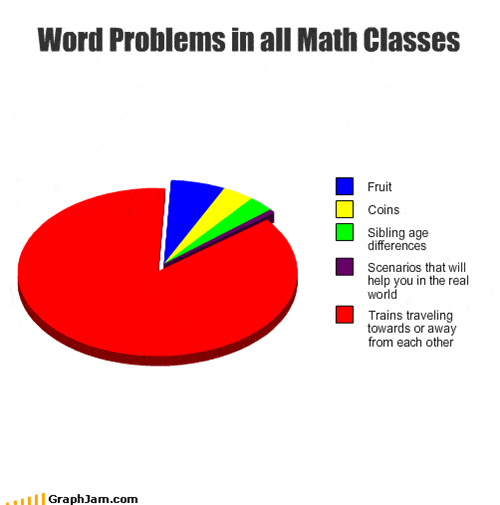Rate problems provide some of the biggest challenges to students and adults. These come from Problem-Solving Processes in Mathematics -6 B by Fabian Ng.
- At 10:15 am, a car left Town X for Town Y at an average speed of 86 km/h, while a truck left Town Y for Town X at an average speed of 74 km/h. At 3:15 pm, the two vehicles were 12 km apart. How far apart were the two towns?
- At 10:30 am, a cyclist started traveling on a road at an average speed of 60 km/h. At 2:30 pm, a motorist started from the same place, traveling on the same road. If the motorist took 4 hours to catch up with the cyclist, find his average speed.
- The distance from Town P to Town Q was 312 km. Winston started from Town P at an average speed of 76 km/h. He maintained this speed for 2 hours before increasing it by 4 km/ for the rest of the journey to Town Q.
a. how long did he take to complete the whole journey?
b. What was his average speed from Town P to Town Q?
Can you draw a model or diagram to illustrate each of these problems?






















